This post contains affiliate links to products, services, or education. We may receive a commission for purchases made through links.
Flux core welding is a versatile method of welding that also super popular and versatile. I wrote this guide describing in full detail the pros and cons of flux core welding. This guide should also help you decide whether flux core welding is right for you, how to get started, and what to expect when starting up. So what are the pros and cons of flux core welding?
Several pros to flux core welding include portability, ease of use, versatility, usability outdoors, and the ability to weld through rust. The cons of flux core welding include the cost of the electrodes, the appearance of the weld bead, spatter, and slag inclusions to name a couple.
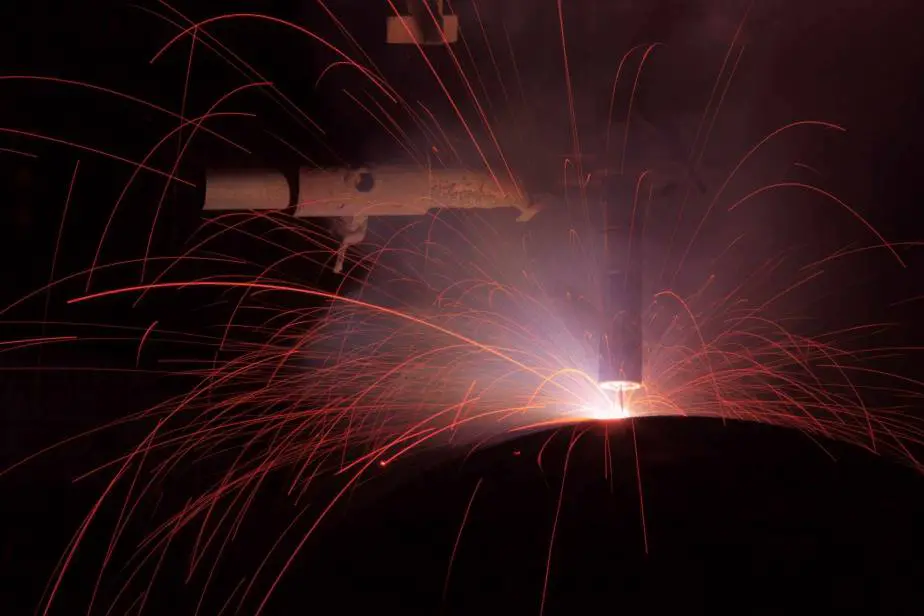
Here you will find a guide to what makes flux core welding so popular. I have also included sections on which wire electrodes are the best for stainless steel, galvanized steel and general repairs. I will also compare flux core welding to both TIG welding and MIG welding and answer the question of whether flux core welding is better than these welding methods.
Is Flux Core Welding Any Good?
The folks at weld.com think so, and so do I. Here’s a cool video demonstrating the basics, then we’ll get into the nitty gritty.
Flux Core Welding, often abbreviated as FCAW, involves the use of a welding wire that is similar in many ways to Metal Inert Gas (MIG) welding except for the fact it includes a flux-cored compound within the wire that has the capability to remove the need for shielding gas.
As for the question of whether this welding method is any good, the answer is yes, provided that the weld bead is being laid down in the recommended circumstances, usually on thicker metals as will be discussed later in this article.
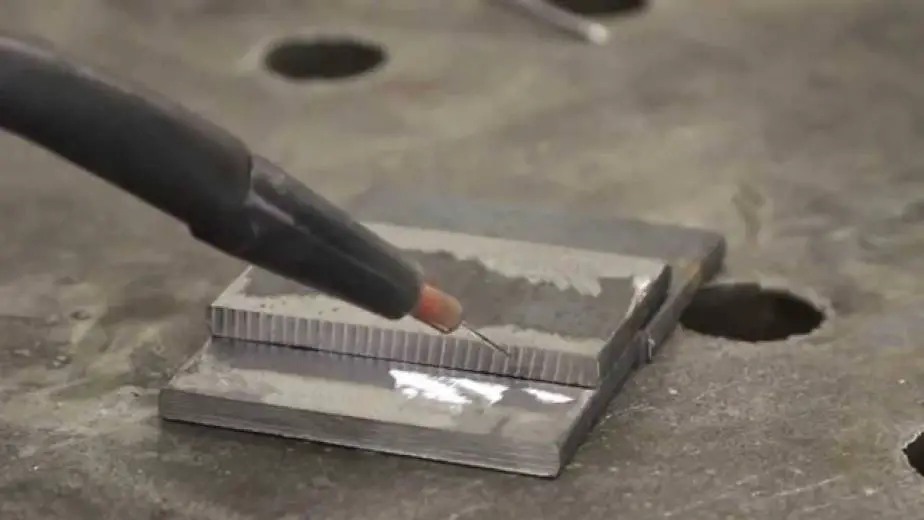
The Flux-cored welder is the field worker’s best friend because they are easy to move from site to site. They are also easy and straight-forward to operate when compared to stick welding. These machines can plug into the standard 120V power system in your home. Since a shielding gas is not needed, you can also use this method to weld in just about any type of weather.
As will also be discussed in further detail later, this welder is also one of the best systems for welding galvanized steel. This is because MIG welding is known for being nearly impossible to weld galvanized steel with because of issues with porosity.
One of the few downsides to this technology is the effort it takes to clean up the slag that is a by-product of the welding process. Fortunately, there are ways to mitigate these complaints that will be discussed in further detail below.
Pros of Flux Core Welding
There are several advantages to using flux core welding over other welding types, such as MIG welding. Learning flux core welding will provide you with the opportunity to weld a variety of materials both indoors and outdoors.
Flux Core Welding Can Easily Be Done Outdoors

Shielding gas is of utmost importance in Metal Inert Gas (MIG) Welding in order to keep the molten weld pool from oxygen, nitrogen and hydrogen in the atmosphere. If the weld pool reacts with these elements, it will become subject to failure from porosity. Check out this article on Bernardwelds.com for more info.
Other reasons why you need to use shielding gases when welding includes the need to:
- Prevent excessive splatter
- Keep the arc stable
- Control the weld penetration into the base metal
While the solid wires used in MIG welding require shielding gases, flux core wires do not require the use of shielding gases. The mechanics behind this capability will be discussed later in further detail later in this article.
The upshot of this is that flux core wires are popular amongst those who frequently have to repair metal equipment outdoors. Flux core welding is popular at construction sites, in shipyards and in the farm field.
Cost & Energy Savings

Flux-cored wires will cost at least a little more than a solid wire of the same size. You can see this by comparing the prices of the same-sized wire online.
This is not always apparent because there are many more factors to consider than whether or not the wire requires a shielding gas. Wires of the same size may serve different uses depending upon their chemical composition. There are wires made of premium materials that will also cost more.
Still, it has been suggested that you can save quite a bit of money by making the switch to gasless flux core wires, if you haven’t done so already. You will begin to really notice the cost savings once you become fully operational.
Depending upon the application, flux core wires can lay down a weld bead at a faster travel speed and with increased deposition rates. The increased efficiency is most pronounced if you are welding in the flat and horizontal positions, according to this article appearing in Fabricating & Metalworking magazine.
According to Tulsa Welding School, a flux core electrode is capable of depositing up to 25 pounds of wire per hour. A MIG electrode, deposits 8 pounds of wire per hour when it is performing at maximum efficiency.
This affects your operating costs because you may have to consume more energy to deposit a pound of solid wire than you would with a flux core wire. Energy savings are perhaps most pronounced when you are welding in position and when you are welding outdoors.
Ability to Weld Rusty Materials
You will find that flux core welding electrodes are much less fussy than solid wire electrodes when it comes to being able to weld metals that have become rusted or otherwise dirtied.

Gas-shielded electrodes usually only perform adequately on base metals that are clean. The presence of extensive rusting and milling is a death-knell of sorts to weld quality. This is because gas-welding through such contaminants can contribute to excess porosity in the weld bead, enhancing the risk of this weld failing.
Self-shielding flux electrodes, on the other hand, can effectively weld through rust and still produce a quality weld bead. A rusty or scaled surface will not contaminate the weld because the flux contained within the wire is more forgiving of the base metal than a solid wire used in conjunction with a shielding gas would be.
Flux Core Welding Easy to Learn
Flux core welding holds a reputation for being easier to learn. According to the Ohio State University Extension, flux core welding is easier to learn than Stick Welding and TIG Welding. The skill level required to master Flux Core Welding is equivalent to that of MIG Welding.
Flux Core Welding/MIG Welding Machines Are Versatile
You can use the same small welding machine to perform both MIG and flux core welding. The machine can run off 115V electricity that you can get from your home and this welding machine is diverse in the number of purposes that it can serve.
Flux core welding can be used to weld all of the most common metals:
- Carbon steel
- Stainless steel
- Aluminum
This makes the flux core welder ideal for home shops and farms. You also don’t have to worry about hauling around a box of electrodes, since the welding gun is fed by a continuous loop of welding wire. The spools vary in size, with the largest of spoils being large enough to fit in a barrel.
Portability
Once you drop the gas tanks, the MIG welding machines can be moved from one location to the next with ease. MIG welding machines will typically weigh just under 40 pounds if you are going with the welders marketed towards DIYers.
Once you put together all your equipment, including the spool of flux wire, it won’t weigh much more than that. And without having to lug around cylinders of gas, you can easily transport the machine to make emergency repairs on construction or farming equipment.
Cons of Flux Core Welding
There are some drawbacks to flux core welding. For one thing, the electrode itself is more expensive than a solid wire electrode. You will also find that it produces more slag at the weld zone than most other electrodes do.
Before we even begin, you should see this great video that will help you eliminate some of the perceived drawbacks (or myths as they call them in the video) before you even begin.
Weld Beads May Not Be Visually Appealing
One reason why you might prefer a solid wire over the flux core wire is the visual appearance of the produced weld bead. Flux-cored wire electrodes produce more spatter during the process than the solid wires used in MIG welding do.
Any welding job performed with a flux core wire will require a lot more effort to clean around the weld bead than what you may be used to with a MIG welder. This is largely due to the power of the flux core and its ability to penetrate through thicker metals.
As a result, flux core wires are not always the preferred method for welding in the automotive repair industry, particularly if the weld is in a location that can be seen easily. When it comes to making quick and easy repairs on short notice, flux core welding is the preferred method.
Solid Wires May Be Better for Thin Metal
Flux core welding wires are also not very well-suited for thin metals, for a couple of reasons. The flux core is a deeply penetrating material, which is great for thick metals but not so much for thin metals. You also have to put in more effort to clean the weld zone of spatter.
As a result, flux core welding thin metals may not be for the faint of heart. It must be done with great care to ensure that you don’t damage the base metal. Flux core wires are ideal for welding pieces that are greater than or equal to 3/16 inches in thickness. This article by Miller Welds explains this point more than I want to get into here.
I want to be clear that it is certainly practical to weld metal that is thinner than that with a flux core welder, but you will find that this may require more finesse than the solid wire. There is also the risk of being able to form a successful weld, but not being happy with its final appearance.
For this reason, I would recommend that you perform test runs on scrap pieces of metal of progressively increasing gauge (or decreasing thickness) to be able to see the results of flux core welding yourself. It’s always a good idea to do some practice if you are unfamiliar with the method anyways.
Cost of The Flux Wire Vs. Cost of Solid Wire
In the subsection above I talked about how the cost of flux core wire can ultimately be less than that of solid MIG wire due to the increased deposition rates with the flux core.
However, the cost of flux core wire can also present a disadvantage in certain circumstances. The flux core wire does indeed cost more than the solid wires. If you cannot take full advantage of the mobility of the flux core method, then you may end up spending more money in the end than you would’ve if you used a different welding technique.
Slag Inclusions Can Occur With Flux Core
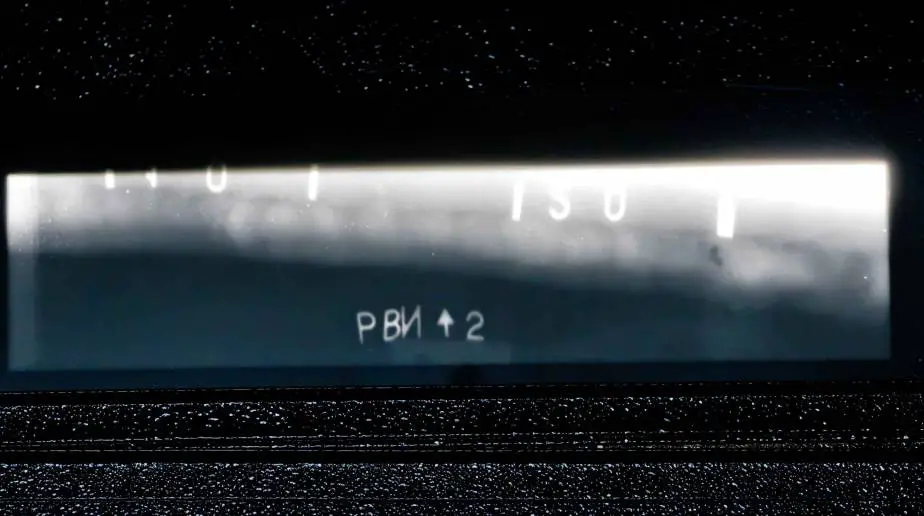
Just like other welding techniques, you should be aware that slag inclusions can occur while flux core welding. A slag inclusion occurs when tiny particles of the flux compound become trapped within the weld metal. Slag inclusions prevent full penetration of the base metal, producing a weld that will certainly not be strong enough to stand the test of time.
I hesitate to name this as a true disadvantage to flux core welding since it can easily be prevented by using proper welding techniques. However, it does bear mentioning because you should be aware of how to prevent it.
The 4 common causes of slag inclusion (according to this article by the Tulsa Welding School) are:
- Improper placement of the weld bead
- Improper weld heat input
- Incorrect travel angle or speed
- Not cleaning a weld between passes of the arc along the weld zone
The drag angle you choose for flux core welding should be between 15 and 45 degrees if you are welding in the flat, horizontal and overhead angles. If you are welding in the vertical up position, you will want to keep your drag angle between 5 and 15 degrees.
Maintain a travel speed that is steady and consistent. Traveling too slowly will contribute to slag inclusions. As always, following the manufacturer recommendations as far as machine size and wire selection should keep welding defects such as slag inclusions at bay.
Do You Need Gas with Flux Core Welding?
You do not need to use external shielding gas with flux-cored arc welding machines, provided that you are using a self-shielded flux wire. Gas -shielded MIG wires, on the other hand, require the use of external shielding gas to protect the weld.
Self-Shielded Flux Wires
Self-shielded flux wires do not require the use of an external shielding gas to protect the weld. The flux compound, located within the continuous hollow wire electrode, protects the weld pool adequately. This flux compound forms a gas as it reacts with the welding arc.
Self-shielded flux-cored wires are commonly abbreviated as FCAW-S wires, with the “S” at the end notifying operators of their self-shielding capabilities. These welding wires are primed for use outdoors, where heavy winds would otherwise interfere with the proper shielding of the weld pool (check out this article by Lincoln Electric).
Their chemical composition lends to self-shielding flux wires becoming more voltage-sensitive than their gas-shielded counterparts. As a result, FCAW-S electrodes require a constant voltage (CV) power source in order to ensure good arc stability.
Constant Voltage (CV) equipment operates under direct current (DC). If your welding machine is not classified as a CV machine, then it is a CC machine, which stands for “constant current”.
Gas-Shielded MIG Wires
Gas-shielded MIG wires need to be used in conjunction with a supply of low-cost shielding gas, either 100% Carbon Dioxide(CO2) or a mixture of Argon (Ar) & Carbon Dioxide. A typical mixture includes 75% Argon with the rest being Carbon Dioxide.
If you use 100% Carbon Dioxide as your shielding gas, you will notice more spatter being generated and globular transfer, marked by a weld bead that progresses in large droplets, often larger than the diameter of the welding wire being used. Check out ways to reduce spatter here.
Increasing the amount of Argon in the mixture yields a mode of transfer much less globular in nature to the extent that it is almost like a spray bottle. Using Argon as part of the shielding gas mixture makes it easier to control the deposited weld metal, as long as the Argon concentration is kept at approximately 80% or less.
The downside to using gas-shielded MIG welding over self-shielded flux core welding is that it can be difficult to utilize a shielding gas outdoors, particularly if it is windy. However, the gas shield does come in handy when it comes time to weld thicker metals.
What Can I Weld with Flux Core?
Flux core welding certainly is practical for those looking for a welding format with a wide variety of applications. This welding method owes its versatility to a welding wire that can operate just as effectively outdoors as it does indoors. Also, if you have MIG welding equipment you may be able to use some of it for flux core welding applications.
Flux core welding is useful for welding:
- General Repairs
- Pipelines
- Shipbuilding
- Manufacturing
- Underwater welding
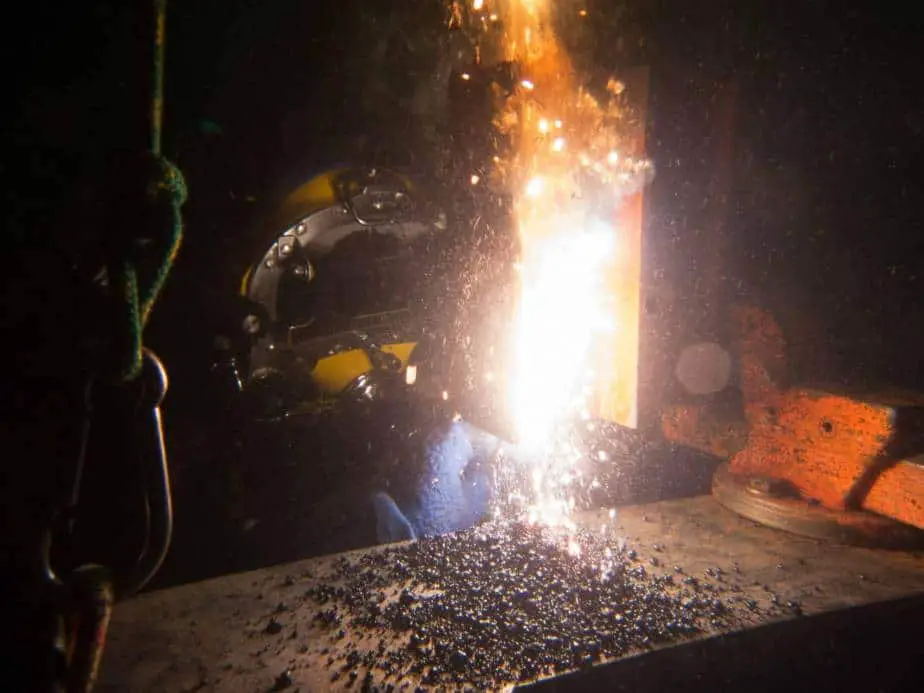
General Repairs
Flux core welding wires allow for greater penetration of base metals, as compared to other welding techniques. It also allows for greater deposition rates.
FCAW welding, whether self-shielded or gas-shielded, is really best-suited for welding thick materials that are at least 20-gauge in thickness. Examples of such materials include stainless steel, carbon steel, low-alloy steels, cast iron, and high nickel alloys.
What Is the Best All-Around Flux Core Welding Wire?
One of the most popular flux core welding wires is the E71T-GS. This is a self-shielding flux core wire that can be used in all positions. It is commonly utilized in auto body repair, farming equipment, tanks, and non-structural frames.
This wire is suitable for welding:
- Thin carbon steels and carbon-manganese steel
- Galvanized steels
- General Field Repairs
- Lap & Fillet Welds on thin gauge materials
The E71T-GS produces a low amount of splatter and it is easy to remove slag from the welded piece. It is tailor-made for routine repairs due to the low penetration of its arc into the base metal. The self-shielding characteristics make it an ideal welding wire for performing field repairs on construction and farming equipment.
This welding wire is also a favorite amongst home workshop welders because it handles like a dream on the 110-volt welding machines that are so often the centerpieces of DIY welding operations.
A Flux Core Wire Well-Suited for Stainless Steel
MIG welding is a welding technique that is commonly used to weld stainless steel. The ER 308L series wire is the most commonly used to weld most stainless steels. High-grade stainless steels are welded with the ER 316L series welding wires and the ER 309L series is used for the welding of stainless steel to other pieces of steel.
Generally, gas-shielded MIG welding wires are used to weld stainless steel pieces with mixtures of Argon and Carbon Dioxide used in the shielding gas. You may also find self-shielding flux core wires useful for welding stainless steel pieces.
The Blue Demon 308LFC-O flux core wire presents welders with the opportunity to weld stainless steel pieces without having to use any shielding gas. It can be used in the flat and horizontal welding positions and is compatible with DC+ (direct current positive).
It can be used for welding 300 series stainless steel up to 308L stainless steel. The 300 series stainless steels are commonly used in the automotive and construction industries. The 308LFC-O flux core wire can also be used to weld 430 series stainless steel.
Flux Core Can Weld Galvanized Steel
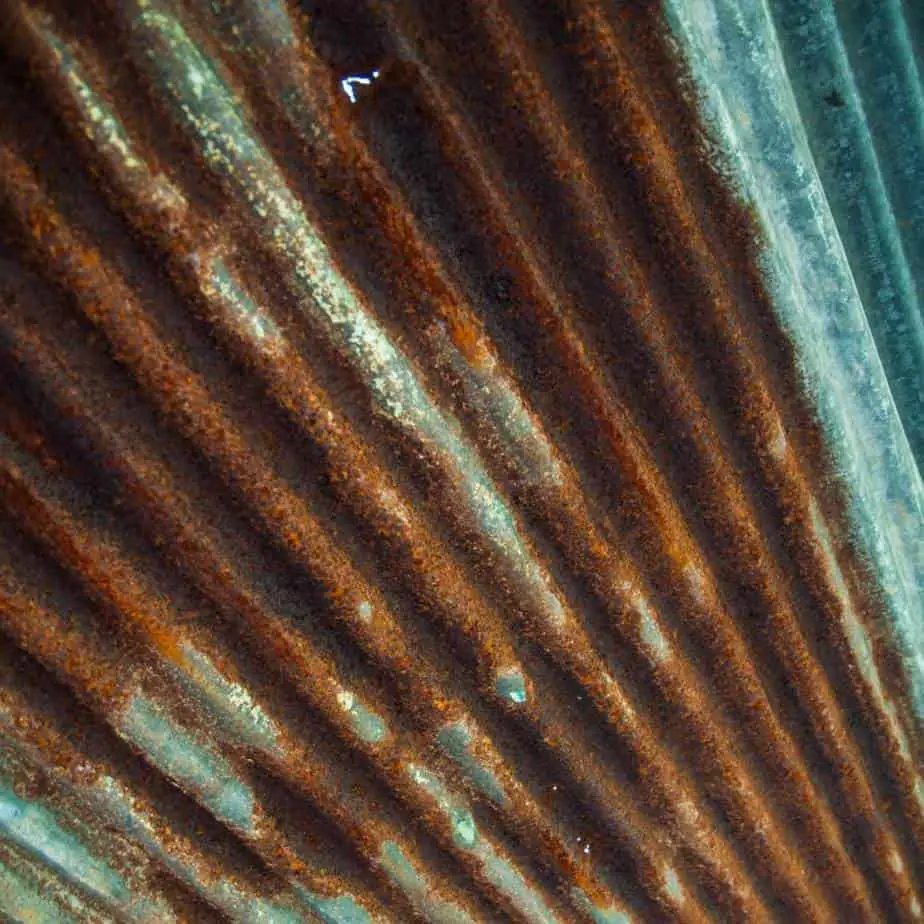
Flux core wires are capable of being used to weld galvanized steel pieces, while your typical solid MIG wires cannot do so. The ingredients in flux core wires enable them to successfully weld galvanized steel.
If you are planning on welding galvanized steel, you will want to pay special attention to the specific flux core wire you choose. Some flux core wire types are specifically designed for being compatible with galvanized steel.
The E71T-11 is the recommended flux core wire for welding galvanized steel pieces. It also works well with thin-gauge mild steels.
Is MIG Welding Better Than Flux Core?
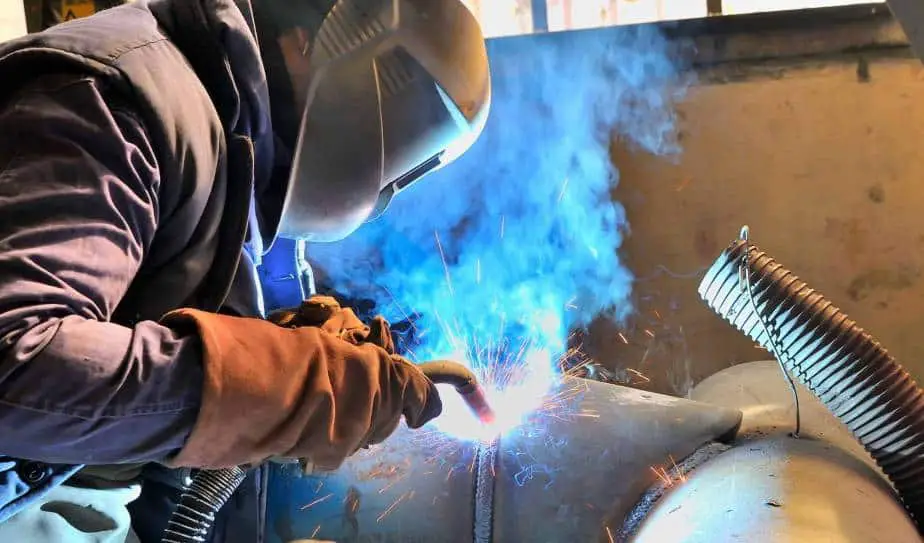
Flux core welding is a lot more convenient than MIG welding because you do not need to use a shielding gas to keep the weld bead stable. Flux core welding is surely the preferred method when welding outdoors. There are circumstances in which MIG welding is the more suitable method.
One method is not necessarily better than the other but there are circumstances in which you may find one solid wire MIG welding more suitable than flux core welding.
Circumstances in which MIG welding may be the way to go:
- If the metal that you are welding is less than 3/16” in thickness
- If creating a weld with a clean finish is of importance to you
- You are looking to lay down a weld bead that you will be able to easily paint over without having to remove excess slag
It can be nearly impossible to use MIG welding wires to weld galvanized steel. The American Galvanizers Association encourages welders to remove the protective Zinc coating from the galvanized steel before proceeding. Then you have to avoid using a 100% carbon dioxide mixture to avoid excessive splatter.
You will find that flux-cored wires are significantly more effective for welding galvanized steel. Nearly every piece of metal that was designed to be kept outdoors, including chain link fence, is galvanized.
Flux core wires are able to successfully weld galvanized pieces because of the chemical composition of the flux. Scavengers and fluxing agents are able to refine the weld. They help to prevent the porosity and cracking issues that are observed when a piece of galvanized metal is welded using a MIG wire.
Is TIG Welding Better Than Flux Core?
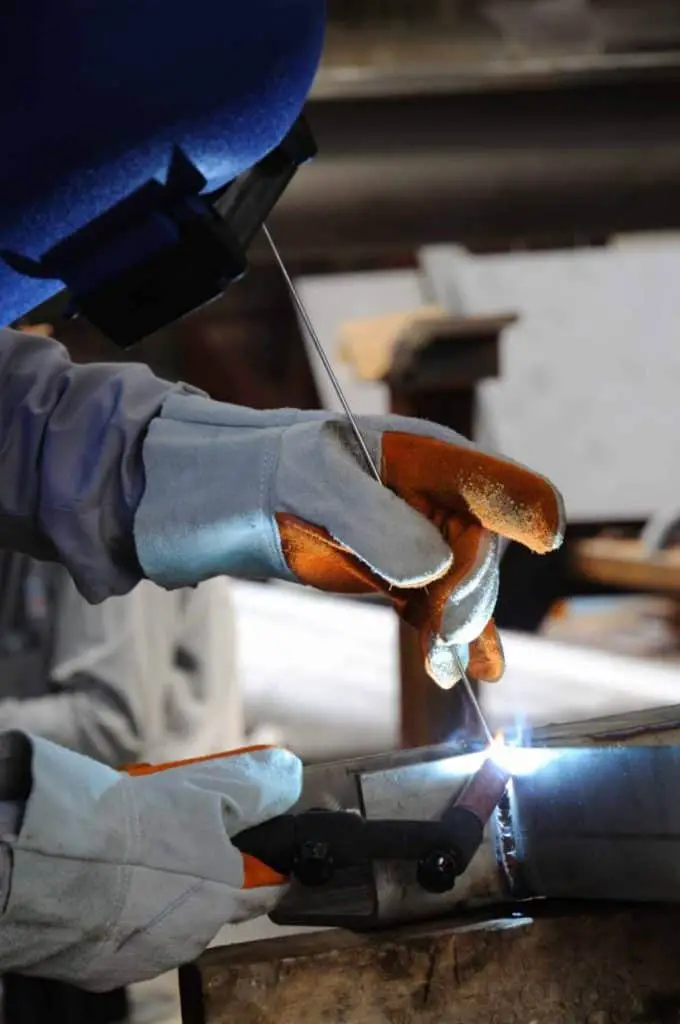
TIG stands for Tungsten Inert Gas, a welding process that is officially called Gas Tungsten Arc Welding (GTAW). The tungsten electrode used in the process is a non-consumable electrode. Check out this article to learn more about TIG welding.
Like MIG welding, this is a welding technique that requires the use of shielding gas in order to keep the weld pool from deteriorating due to porosity issues. Argon is the inert gas that is often used with TIG Welding.
The fact that the tungsten electrode is non-consumable allows the welder to bond metal pieces together without having to use a filler metal, even though filler metals are often used anyway. TIG welding can be used in metal-to-metal welds and results in a cleaner weld zone.
One caveat to TIG welding is that it requires more refined welding skills than MIG and flux core welding. You must take care to not overheat the weld as it can result in stress cracks and other similar deficiencies in the finished weld.
TIG welding is also not very effective at welding thicker metal pieces. If you are welding a piece that is approximately 3/16” thick or thicker, then flux core welding will be your best bet. Tig welding was invented to weld thin metals for applications like aerospace. It is fantastic for some metals and particular thicknesses, but not all. It also works best when you are able to back purge when your TIG welding job. Check out why back purging is awesome here.
All in all, flux core welding is a unique, simple to learn, versatile welding technique that can work where other techniques cannot. If you work outside primarily, and in the positions mentioned above, this would be worth checking out for welding jobs around the house or farm. Thanks for reading and keep stacking dimes!

